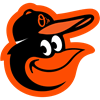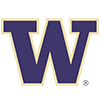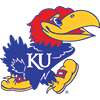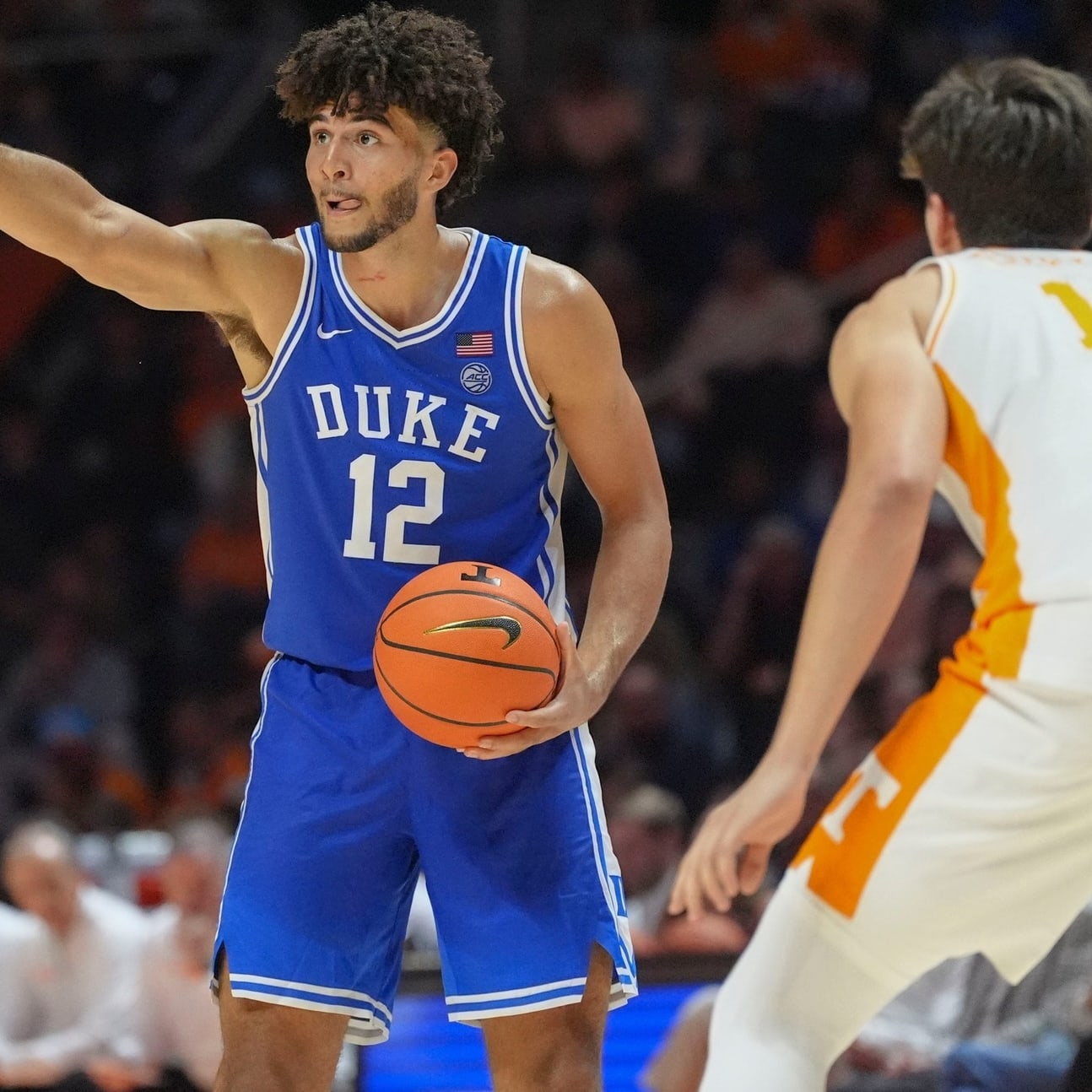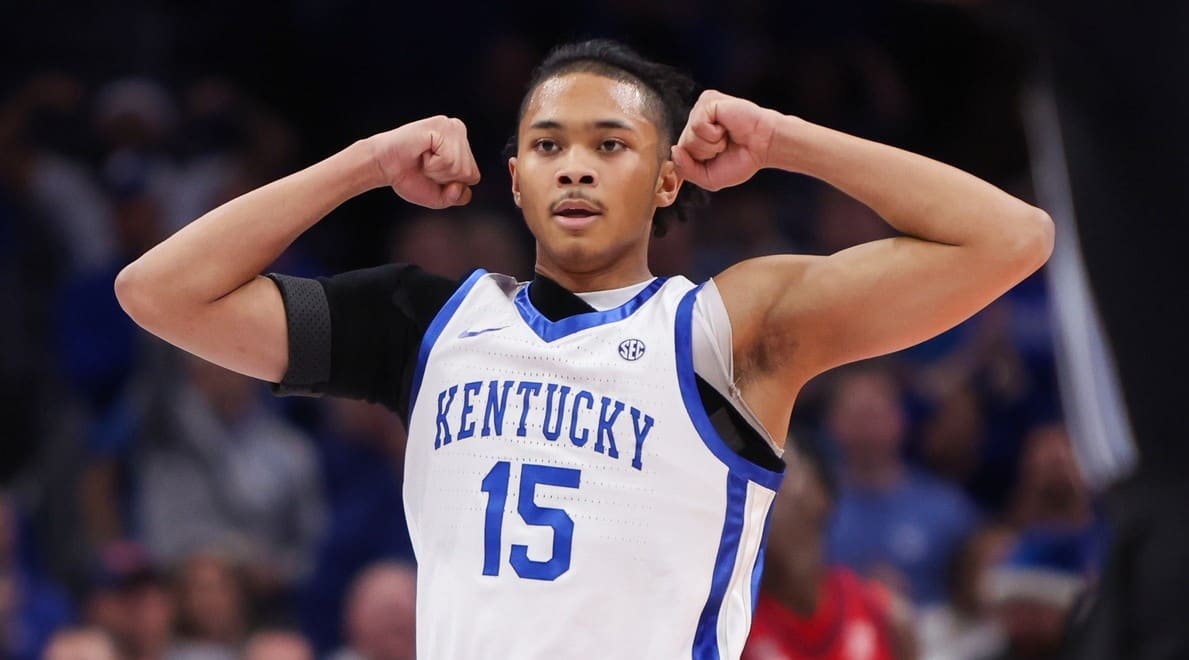What's the best part of writing about college basketball? March Madness. What's the worst part of writing about college basketball? Predicting March Madness. That's right, I said it. When you write about college basketball, everyone wants advice in March. That's just the way it goes. "You watch all year round, you must know something we don't!" The truth is, I don't always even win the bracket pool among my co-workers or law school friends. Let's be honest; your boss who couldn't name one player on Duke or pick Frank Mason Jr. out of a lineup has a better shot at winning.
That's what the Madness brings. You're bombarded with statistics, formulas, diagrams, depth charts, and "gut feelings". But after all that time spent crunching numbers and doing research, your spouse who picked the games by color ended up with a better bracket than you.
But fear not, my friends. There is hope for us yet. All hail, "The NCAA Tournament Gospel". The following five rules have been passed around and collected over the years, reprised, tweaked and edited. They highlight my strategies and theories on picking a successful bracket. I don't always pick the Final Four correctly, but when I do, these are my guidelines. Behold, the Commandments of Madness.
1. Do not pick all four No. 1 seeds in the Final Four. First of all, what's the fun in that? Secondly, the only year since seeding began in 1979 that four No. 1 seeds made the Final Four was
What's the best part of writing about college basketball? March Madness. What's the worst part of writing about college basketball? Predicting March Madness. That's right, I said it. When you write about college basketball, everyone wants advice in March. That's just the way it goes. "You watch all year round, you must know something we don't!" The truth is, I don't always even win the bracket pool among my co-workers or law school friends. Let's be honest; your boss who couldn't name one player on Duke or pick Frank Mason Jr. out of a lineup has a better shot at winning.
That's what the Madness brings. You're bombarded with statistics, formulas, diagrams, depth charts, and "gut feelings". But after all that time spent crunching numbers and doing research, your spouse who picked the games by color ended up with a better bracket than you.
But fear not, my friends. There is hope for us yet. All hail, "The NCAA Tournament Gospel". The following five rules have been passed around and collected over the years, reprised, tweaked and edited. They highlight my strategies and theories on picking a successful bracket. I don't always pick the Final Four correctly, but when I do, these are my guidelines. Behold, the Commandments of Madness.
1. Do not pick all four No. 1 seeds in the Final Four. First of all, what's the fun in that? Secondly, the only year since seeding began in 1979 that four No. 1 seeds made the Final Four was 2008. In fact, three No. 1 seeds have made it just four times in the same year in the modern era. Last year, only one No. 1 seed made the Final Four.
2. If you don't like a high-seeded squad, pick it to go out as soon as reasonably possible. So, if you don't believe in, say, Gonzaga, pick the Bulldogs to lose once they get past the No. 16 seed. You'll be the only one who picks that game correctly, and even if it's an incorrect selection, you wouldn't have had the 'Zags going that far anyway.
3. There are no bragging rights for picking a No. 10 over a No. 7 seed, or a No. 9 over a No. 8 seed. These are not upsets. All those teams are basically even. Take bigger risks! Even the 11-6 matchup is starting to not feel like an upset anymore. In fact, since 2010, the No. 11 seed has won the matchup more than 50 percent of the time. In 2016, three of the four No. 11 seeds won the 11-6 matchup.
4. While we're on the subject of upsets, pick at least one 12-5 trap game. Maybe two. Since the NCAA expanded to at least 64 teams, it's happens about once every three contests. The upsets have been even more prevalent in recent years. From 2008-2016, No. 12 seeds were 17-19 against the No. 5 squad. Last year, two No. 12 seeds beat No. 5 seeds.
5. Pick at least one seed lower than a 10 to make the Sweet 16. Last season, a No. 10 seed in Syracuse actually made the Final Four! Besides, I'd rather pick the game by which mascot would win in a fight than pick all favorites. Sorry, Syracuse fans, there's no hope for you this year though.
Now that you're primed to fill out that winning bracket, let's take a more in-depth look at the regions.
MIDWEST REGION
Kansas will be favored to win this region, and the Jayhawks catch a break because No. 3 seed Oregon just lost a key player in Chris Boucher to a season-ending knee injury. Bad luck for the Ducks, who likely won't be able to make it past the Sweet 16. A Sweet 16 matchup of Big 12 foes between Kansas and Iowa State could spell trouble for the Jayhawks, though. The Cyclones took down the Jayhawks at home in early February, ending KU's 53-game home winning streak. Meanwhile, the Michigan Wolverines have been playing fantastic ball of late, and the Big Ten Tournament champs appear to be surging at the right time. Michigan has the chops to take down Louisville in the second round.
Speaking of teams that are scorching hot coming into the tournament, Rhode Island went from bubble squad to automatic qualifier as champions of the A-10 Tournament. Now healthy, the Rams have a great chance as a No. 11 seed to upset Creighton. Rhode Island enters the big dance on an eight-game winning streak. Don't count out the Catamounts, either. Vermont rides a 21-game winning streak heading into the tourney, led by America East player of the year Trae Bell-Haynes. The Catamounts will face a Purdue squad that was bounced in the first round last year by a No. 12 seed.
SOUTH REGION
From top to bottom, this feels like the most talented region, at least on paper. North Carolina is coming off yet another regular season championship in the ACC, and despite losing twice to Duke, the Heels were rewarded with a No. 1 seed. Reward may not be the right word, though, as the No. 2 seed in this region is uber-talented Kentucky led by freshmen Malik Monk, Bam Adebayo and De'Aaron Fox. Meanwhile, the toughest No. 3 seed in the tourney is UCLA, which features perhaps the No. 1 pick in the upcoming NBA Draft in Lonzo Ball, as well as a fellow freshman TJ Leaf and the steady hand of the coach's son, Bryce Alford. North Carolina has a size advantage over just about any opponent, but it remains to be seen if their guards can keep up with the Wildcats or the Bruins.
The classic 5-12 trap-game is intriguing between Middle Tennessee State and Minnesota. The Golden Gophers have had a tremendous turnaround under Pitino the Younger, but the Blue Raiders finished the season on a 20-1 spurt, and much of this group returned from last season's bracket-busting defeat of No. 2 Michigan State in the opening round of the tourney.
WEST REGION
Is this the year Gonzaga finally breaks through? The 'Zags have gone from Cinderella to powerhouse over the last two decades, but coach Mark Few has yet to lead his team past the Elite 8. This year's squad is perhaps his best chance to date, as the 'Zags lost just once en route to yet another WCC Title. The refrain remains the same, though; are the Bulldogs for real? Battle-tested? Did they play enough "tough" opponents, or close games?
This particular region does not seem ripe for too many upsets. Notre Dame is a very strong No. 5 squad out of the ACC, so Princeton will have a rough time with the Irish. In addition, Bucknell may not be able to solve West Virginia's aggressive, pressing defense. The one squad to watch is Dunk City, No. 14 Florida Gulf Coast. The Eagles, who have been a tournament darling for years, get a reeling Florida State squad that went just 4-4 down the stretch, including 2-4 away from home.
EAST REGION
SMU is my bracket-buster pick. The Mustangs are a No. 6 seed despite finishing the year at a stout 29-4, with both the regular season and tournament crowns in conference. Semi Ojeleye is the star for the 'Stangs, and the Duke transfer was also the Player of the Year in the AAC. The No. 6 seed feels a little low, and Southern Methodist may make a team like Baylor pay. There's also the possibility of a Sweet 16 matchup with Ojeleye's former school. Don't think the Selection Committee didn't notice that.
Still, it will be tough for anyone to dethrone the defending champs, as the Villanova Wildcats have picked up right where they left off from a season ago. Josh Hart, Kris Jenkins and Jalen Brunson are all back again, though possible matchups with Wisconsin, Florida and Duke certainly could provide roadblocks.
The 12-5 trap game once again draws my eye. UNC-Wilmington vs. Virginia is a clash of styles. The Seahawks are one of the highest scoring teams in the nation, averaging 85.2 points per contest. Meanwhile, the Cavaliers are known for their ferocious defense under coach Tony Bennett. If the Seahawks can solve the Virginia defense early and jump out to a lead, it may be difficult for the offensively-challenged Cavaliers to make up the difference.
FINAL FOUR
Taking in the bracket as a whole, the top tier squads appear to be a cut above. A rematch between Arizona and Gonzaga likely looms in the West Final, with the Wildcats hoping to avenge an early-season loss to the 'Zags. Kansas has a pretty clear path to the Final Four in my opinion. Their loss to TCU in the Big 12 Tournament came without arguably their most talented player, Josh Jackson. In the East, Duke is on fire and Villanova has barely been challenged. North Carolina should cruise to the Elite 8 as well, though a battle with either Kentucky or UCLA likely looms in the South Final.
Predictions? Kansas, UCLA, Arizona, Villanova. Bluebloods abound, and the most talented player in college basketball, Lonzo Ball, brings a long-awaited title back to Westwood. Ball wasn't even alive the last time UCLA cut down the nets. Whether or not that happens, he'll go pro and the next Ball brother will come to town.















